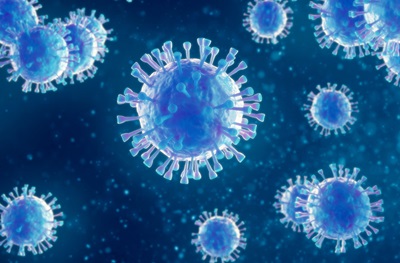 Adipose-Derived Stem Cells: Revolutionizing Orthopedic and Cosmetic Treatments
Adipose-Derived Stem Cells: Revolutionizing Orthopedic and Cosmetic Treatments
Stem cell therapy has gained significant attention in recent years for its potential to repair, regenerate, and rejuvenate damaged tissues. Among the various types of stem cells used in medical therapies, adipose-derived stem cells (ADSCs) are particularly promising due to their abundance, ease of extraction, and versatility in treating a wide range of conditions. Derived from fat tissue, ADSCs offer a non-invasive, natural solution for both orthopedic and cosmetic applications.
What Are Adipose-Derived Stem Cells?
Adipose-derived stem cells are mesenchymal stem cells (MSCs) extracted from fat, or adipose tissue. These cells possess remarkable regenerative properties, capable of differentiating into various cell types, including bone, cartilage, muscle, and skin cells. Because fat tissue contains a higher concentration of stem cells than bone marrow, harvesting ADSCs is a more accessible and less painful process for patients. ADSCs are collected through a simple liposuction procedure, after which the cells are processed and prepared for therapeutic use. Their natural ability to modulate the immune response and reduce inflammation makes them ideal for numerous clinical applications, from orthopedic treatments to cosmetic procedures.
Orthopedic Applications of Adipose-Derived Stem Cells
ADSCs are transforming the field of orthopedics, offering new, minimally invasive options for patients suffering from joint, tendon, and ligament injuries. Traditional treatments for such conditions often involve surgery or long-term reliance on medications, but ADSC therapy provides a regenerative approach that can potentially restore function and alleviate pain without extensive recovery time.
Common Orthopedic Conditions Treated with ADSCs:
-
Osteoarthritis - Stem Cells can stimulate the repair of damaged cartilage, reducing pain and improving mobility in affected joints, such as the knees, hips, and shoulders.
-
Tendon and Ligament Injuries - Athletes and active individuals are prone to tendon and ligament injuries, such as Achilles tendonitis or rotator cuff tears. ADSCs promote tissue regeneration in these areas, speeding up the healing process and restoring function without the need for surgery.
-
Spinal Disc Degeneration - For patients with chronic back pain due to degenerative disc disease, ADSCs can help speed the healing of intervertebral discs, potentially alleviating pain and improving spinal function.
-
Bone Fractures and Non-Unions - ADSCs can accelerate the healing of bone fractures and even treat non-unions, where bones fail to heal properly. By promoting bone growth, these stem cells aid in quicker recovery times for patients.
The Benefits of ADSC Therapy in Orthopedics
- Minimally invasive: No major surgery required, reducing recovery time and minimizing complications.
- Natural healing: ADSCs use the body's own regenerative potential, reducing reliance on synthetic medications or procedures.
- Faster recovery: Patients typically experience faster recovery with ADSC treatments compared to traditional therapies.
Cosmetic Applications of Adipose-Derived Stem Cells
In addition to orthopedic treatments, ADSCs are gaining popularity in the field of cosmetic medicine, where they are used for natural, non-surgical enhancements and rejuvenation procedures. Their ability to regenerate skin and fat tissue makes them ideal for patients seeking youthful, long-lasting results.
Popular Cosmetic Treatments with ADSCs:
-
Facial Rejuvenation - ADSCs are used in facial fat grafting procedures, where fat is harvested from one area of the body and injected into the face to restore volume, smooth wrinkles, and improve skin texture. The stem cells within the fat help stimulate collagen production, leading to longer-lasting, more natural-looking results than traditional dermal fillers.
-
Breast Augmentation and Reconstruction - Fat grafting enriched with ADSCs is becoming a popular alternative to traditional breast implants. Patients seeking natural-looking breast augmentation or reconstructive surgery after mastectomy can benefit from ADSC therapy, which provides enhanced fat retention and tissue regeneration.
-
Scar Treatment - ADSCs are used to improve the appearance of scars, including acne scars, surgical scars, and stretch marks. By promoting new tissue growth, these stem cells can soften and smooth the skin, making scars less noticeable over time.
-
Hair Restoration - ADSC therapy has shown promise in treating hair loss conditions, such as androgenetic alopecia. By injecting ADSCs into the scalp, clinicians can stimulate dormant hair follicles and promote new hair growth.
The Benefits of ADSC Therapy in Cosmetic Treatments
- Natural and long-lasting results: Unlike synthetic fillers or implants, ADSCs use the body's own cells, resulting in more natural-looking, durable outcomes.
- Minimal downtime: Cosmetic procedures involving ADSCs often require little recovery time, allowing patients to return to their daily activities quickly.
- Non-surgical alternative: For individuals seeking enhancements without the risks and scars associated with surgery, ADSC therapy provides a minimally invasive option.
*** Use of Stem Cells in Medicine is still experimental. NO GUARANTEES are made or implied, and each patient is unique in his/her outcomes.***
The Idaho Center for Integrative Medicine also offers Stem Cell Banking. Please contact us for details.
We often recommend additional therapies like shockwave, PEMF, Red Light Therapy, hyaluronic acid, and PRP to augment our outcomes. We've found this approach to be a great combo for our patients.
Stem cell therapy is not covered by insurance, so payment is required at the time of service.
